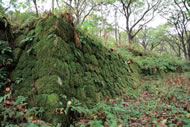
Road & Geosite Conditions
Fully Accessible
- Number
- Area
- 1. Ichiburi Geosite
- 2. Oyashirazu Geosite
- 3. Omi Coast Geosite
- 4. Omigawa Jade Gorge Geosite
- 5. Imai Geosite
- 6. Itoigawa-Shizuoka Tectonic Line and Salt Trail(North) Geosite
- 7. Maikomidaira Geosite
- 8. Hashidate Gold Mine Geosite
- 9. Kotakigawa Jade Gorge Geosite
- 10. Tsugami Shindo Geosite
- 11. Himekawa Gorge Via Oito Line Geosite
- 12. Itoigawa-Shizuoka Tectonic Line and Salt Trail(South) Geosite
- 13. Himekawa Gorge Geosite
- 14. Renge Geosite
- 15. Itoigawa Coast Geosite
- 16. Miyama Park and Museums Geosite
- 17. Tsukimizunoike Geosite
- 18. Umidani Gorge Geosite
- 19. Amakazariyama Geosite
- 20. Yakeyama Geosite
- 21. Benten-iwa Geosite
- 22. Shindosan Geosite
- 23. Gongendake Geosite
- 24. Tsutsuishi Hamatokuai Geosite
- Jade
- 1. Ichiburi Geosite
- 2. Oyashirazu Geosite
- 3. Omi Coast Geosite
- 4. Omigawa Jade Gorge Geosite
- 9. Kotakigawa Jade Gorge Geosite
- 15. Itoigawa Coast Geosite
- 16. Miyama Park and Museums Geosite
- Fossa Magna
- 5. Imai Geosite
- Itoigawa-Shizuoka Tectonic Line and Salt Trail(North) Geosite
- 11. Himekawa Gorge Via Oito Line Geosite
- 12. Itoigawa-Shizuoka Tectonic Line and Salt Trail(South) Geosite
- 13. Himekawa Gorge Geosite
- 17. Tsukimizunoike Geosite
- 21. Benten-iwa Geosite
- 22. Shindosan Geosite
- 24. Tsutsuishi Hamatokuai Geosite
- Mountainous areas
- 7. Maikomidaira Geosite
- 8. Hashidate Gold Mine Geosite
- 10. Tsugami Shindo
- 14. Renge Geosite
- 18. Umidani Gorge Geosite
- 19. Amakazariyama Geosite
- 20. Yakeyama Geosite
- 23. Gongendake Geosite

Hashidate Gold Mine, the largest goldmine in Itoigawa, is said to have been built by Uesugi Kenshi, daimyo of Echigo Province (Niigata Prefecture) during the Warring States period (16th Century CE). Before being abandoned, it produced about 1.2 metric tons of gold. The vast majority of this gold was mined between the years of 1898 and 1905 where over 1,000 workers extracted 846kg of gold from the tunnels. With the construction of a hydroelectric plant in 1903, this area also became the site of the first electric light in Itoigawa.
Here, where the mountain ridges surrounding Kanayama Valley, Nagajiri Valley, and Aso Valley converge, you can still see many pitheads. Also, in the flat zone, you can see a stone wall and millstone left as reminders of the gold mine offices and smelting works that once occupied this location.
Legends are told of a Yamanba, or mountain witch, who once lived near here. On the side of Shiratori Mountain, Yamanba Cave is said to have been her home and Odori'iwa is said to be the stone upon which she would dance and sing. Zeami, a playwright of the Muromachi period (14th century CE), used this legend as inspiration for his Noh play, "Yamanba."


Remains of the Gold Mine Office

Millstone used to crush ore

Pithead

Ore consisting of gold flecks in quartz

Rock used to build office wall

Gold dust found in Omigawa River
(0.5~2mm)
Route to Hashidate Gold Mine Geosite
Destination:
